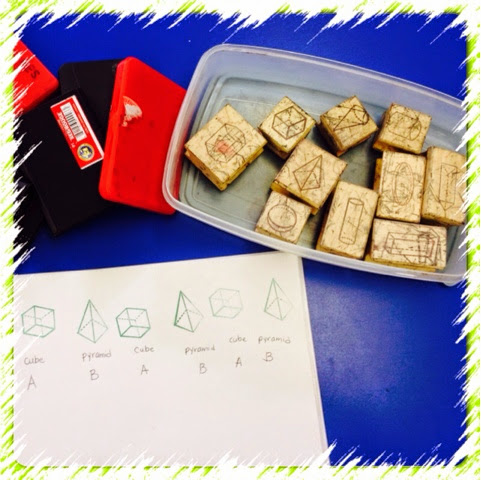Time seems to be speeding up as the closing weeks of our school year fly by. We've been working hard to continue learning and developing our skills in Grade 1. Discovery learning continues to be an important part of our learning. Here are our discovery tubs from the last couple of weeks:
Discovery Tub Contents:
Playing card mats (printed from First Grade School Box blog) Decks of cards (I included some with numerals only/no "dots" to count)
Students at this tub can: find cards to make the number sentence true, work with "fact families"/related facts/turnaround facts
Questions to ask: What card could go here? Can you use different cards to make that number sentence true? Is there another fact you can make with the same cards? What other facts would be in this fact family?


Discovery Tub Contents:
Domino addition mats (printed from First Grade School Box blog) Dominoes
Students at this tub can: practice addition using the dominoes, record number sentences to match the representation on dominoes, create their own addition sentences and draw new domino combinations to match
Questions to ask: How did you know that ____ + ____ was _____? , What would your domino look like to match your fact?


Discovery Tub Contents:
GeoboardsElastics
Label cards for a variety of shapes (rhombus, triangle, square etc)
Students at this tub can: replicate a variety of shapes, combine shapes to create a design, "freestyle" design, identify shapes within their design
Questions to ask: What shape did you create? What shapes are in your design? How many squares do you see in your design? How many rectangles can you make on one board?

Discovery Tub Contents:
Pattern blocksShape blocks
Pattern Block/Shape Block puzzles (such as these)
Paper
Students at this tub can: solve puzzles provided, create a design and trace around their blocks to create a new puzzle, identify shapes
Questions to ask: What block would fit there? Could you use a different block in that spot? What shape is that? Can you create a puzzle?


Discovery Tub Contents:
egg cartons cut into tens
blocks
paper
Students at this tub can: practice addition and subtraction with blocks, create addition and subtraction sentences to represent their work, count by 10s, work with multiple addends, count by 2s, practice grouping
Questions to ask: How many blocks do you have altogether? How can you count your blocks? What do your egg cartons show? How do you know? How many numbers can you add together? Can you show me subtraction?

Discovery Tub Contents:
3D objects stampspaper
ink
label cards for 3D objects (pyramid, sphere, prism etc)
Students at this tub can: create a pattern, identify and label 3D objects, extend a pattern, translate a pattern, discover the names for new objects by examining faces (ie: hexagon faces on a prism = hexagonal prism)
Questions to ask: What is your pattern? Can you translate your pattern? What is the name of that objects? Can you extend your pattern? What would come next in your pattern?


















